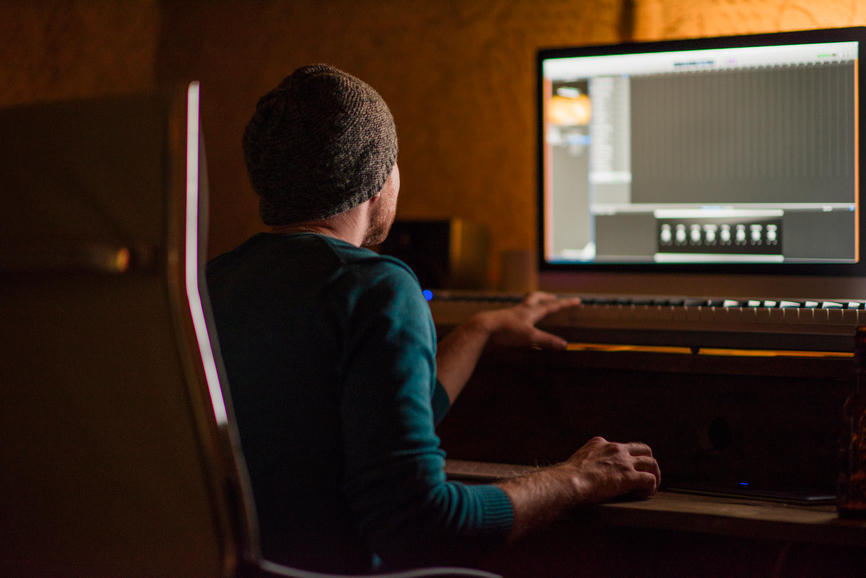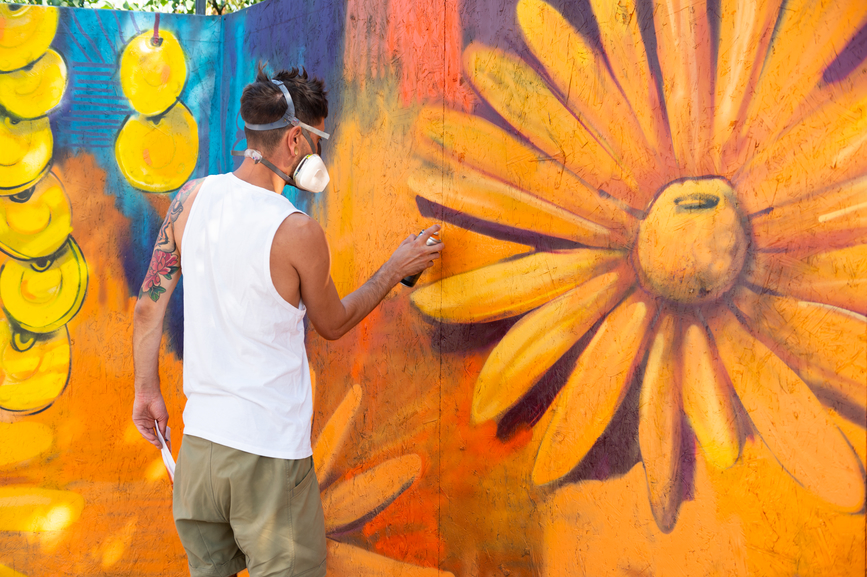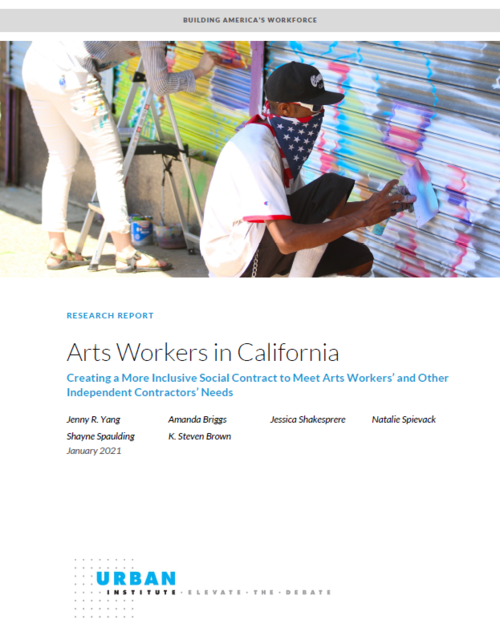Advocating for artists on the blockchain
Advocating for artists on the blockchain
Althea Erickson
Althea Erickson is the Director of the Sol Center for Liberated Work, a program of the Center for Cultural Innovation. Previously, Althea was the Vice President of Global Government Affairs and Impact at Etsy, and Advocacy & Policy Director at Freelancers Union.
Artists’ economic security depends on their ability to own and control their intellectual property rights, but they often lack the means or bargaining power to protect those rights.
For example, musicians often forgo rights to their work when signing record deals, while freelance writers must often sign contracts that give publishers full rights to their work in all forms in perpetuity. Unlike in many other countries, US visual artists don’t have a means to collect resale royalties on their work, even as those pieces grow in value over time.
The blockchain offers exciting opportunities for artists to take more control over their work, and expands ways for them to earn income from that work. It allows for more direct connection between artists and their fans, circumventing traditional gatekeepers. Through smart contracts and the metadata associated with NFTs, artists can set and enforce the terms of their license agreements in their work, including enabling many to collect resale royalties for the first time.
Given the opportunities and lack of traditional gatekeepers, it’s not surprising that many Black and Brown artists and creatives moved quickly into the space. Black individuals have been at the forefront of participating, legitimizing, and shaping the development of blockchain-based financial markets, activities, community forums, and art. We follow the artists we serve where they go, which is why we started exploring and learning about the web3 space.

We quickly learned that while the opportunities are significant, so are the risks, especially when it comes to artists protecting themselves and their work. In particular, the platforms themselves have significant power to set and enforce terms, limiting the promise of true self-determination for creatives.
To truly capture the ownership opportunities the blockchain offers, artists moving into the space need tools and information to help them set and enforce their rights. That’s why we commissioned Alex Glancy at the law firm Gundzik Gundzik Heeger LLP to write a report on the legal issues artists face on the blockchain (report forthcoming).
Given our interest in the issue, we were excited to learn in late 2022 that the U.S. government had undertaken a study into the issues surrounding intellectual property and NFTs. Policymakers are exploring whether current intellectual property laws need to be updated or changed, given the new technology. The U.S. Senate Subcommittee on Intellectual Property requested that the US Copyright Office and US Patent and Trademark Office undertake a joint study exploring intellectual property issues and NFTs. As part of that study, the Offices requested written comments, as well as hosted several public roundtables on the topic.
We worked with other stakeholders from the arts community to collect feedback on the issues artists and creatives face in the NFT space, and collaborated with Alex to develop comments to the USPTO/USCO study. We also participated in one of the public roundtables the Copyright Office organized, advocating on behalf of the creatives CCI serves, especially those from marginalized communities. You can read our submission here, and watch the roundtable here.
In advocating for the arts workers and creatives we serve, we made four major points:
- Artists need better tools to understand and influence the ways NFT marketplace terms impact their intellectual property rights, including the ability to assess terms, determine licenses, as well as choose or change platforms
- There is significant legal uncertainty regarding the ways copyright law and contract law overlap on the blockchain, which creates copyright management and enforcement challenges for creators and inconsistencies in enforcement
- As is the case off the blockchain, small creators need education and technical assistance to help them protect and manage their intellectual property on the blockchain, in particular given the high barriers to informed entry in the market and the lack of trusted advisors, especially within marginalized communities
- While the blockchain offers ways small creators can support themselves via direct payments and resale royalties, we worry about their overdependence on too-few platforms that could potentially use their market power to strip artists of ownership of artwork, rights to reproduce, trademark, and other economic opportunities.
Yes, we’re excited about the opportunities blockchain technologies offer for arts workers to control and derive economic benefits from their work. However, lack of information, tools, support and means to exert collective power may undermine the potential of these technologies to help creators – especially creators from marginalized communities – achieve greater self-determination.
Contributing to this public study was just the first step we’re taking to advocate for artists' ownership rights in this space. In the days to come, we’ll be publishing the report drafted by Alex Glancy on legal issues artists face on the blockchain, sharing artists' experiences and challenges with lawmakers, and continuing to collaborate with our peers to uplift their voices in the public debate.
Have a story to share about your experience using blockchain technologies? We’d love to hear it here!
All workers should have wage and hour protections
All workers should have wage and hour protections
Althea Erickson
Althea Erickson is the Director of the Sol Center for Liberated Work, a program of the Center for Cultural Innovation. Previously, Althea was the Vice President of Global Government Affairs and Impact at Etsy, and Advocacy & Policy Director at Freelancers Union.
The recent political fights over misclassification–whether a worker should be classified as an employee or independent contractor–have been fierce, and a major priority of the labor movement.
Labor leaders often argue that the best way to protect all workers is to classify them as employees, while their antagonists–companies that rely on contract labor–often tout workers' desire for flexibility and independence without acknowledging their twin need for security and protections. As the public debate has become more polarized between these two positions, true independent workers–those who are not misclassified–are often overlooked.
Many arts workers fall into this middle category, and found themselves caught up in the debate around AB-5 in California, which established a much more stringent “ABC test” for determining whether a worker should be classified as an employee or an independent contractor, changing many arts workers from independent contractors into employees overnight. At the time, we commissioned the Urban Institute to publish an analysis of the proposed classification law on arts workers. Lawmakers in California are still sorting out the details of implementation, first through A.B. 2257, which exempted many arts professions from the law altogether, and more recently through S.B. 1116, which seeks to support nonprofit arts institutions' capacity to comply with the law. Other states are considering similar legislation, but the topic remains fraught.
The federal government is also looking at the issue of classification. In August 2022, the Department of Labor put out a request for comments on its new proposed classification rule. Though the proposed rule didn’t mark a meaningful departure from the status quo (it rolls back a Trump era rule that was put into place during the waning days of that administration), the open comment period felt like an important opportunity to uplift the experiences of arts workers and others working in the gig economy who may be rightly classified, but lack worker protections under labor laws.

We worked with allies in the arts to solicit feedback about arts workers' experiences, and heard about frustrations some creatives feel having to choose between security and flexibility, as well as common challenges bargaining for fair pay, given that independent contractors are not allowed to collectively bargain under the law.
Ultimately, we submitted these comments to the Department of Labor, which broadly supported the new rule because it enables more flexibility than the ABC test to determine a worker's classification, ensuring that those who are misclassified can get reclassified, while also allowing courts to consider the more nuanced circumstances many arts workers operate under. We also made the broader point that all workers, regardless of their classification, deserve wage protections and the right to collectively bargain.
Current law makes it difficult for independent contractors to collectively negotiate wage and hour standards and protections. We believe this could be rectified through several reforms, including allowing independent contractors to form unions under the National Labor Relations Act (NLRA), allowing secondary boycotts under the NLRA, clarifying that independent contractors may set industry wage standards and overtime protections without violating antitrust law, and enabling sectoral bargaining models that include independent contractors.
It bears mentioning that the issue of classification is tantamount to worker protection because we have, as a society, tied so many protections to employment. While proper classification of workers is one path to ensuring worker protections, it is not, and cannot, be the only path to ensuring that all workers have the social and economic protections that they deserve.
We believe that arts workers–and other gig workers who share their precarity–should not have to choose between the security and protections currently tied to full-time employment, and the flexibility, independence, and ownership rights that come with independence. As a society, we should guarantee flexibility AND security to all workers, regardless of their employment status.
Reimagining paid leave for the self employed
What might a truly great paid leave program look like for the self-employed? And, if we can get paid leave working for independent contractors, how might that become the model for delivering other types of safety net protections?
The question of making paid leave work for the self-employed is a little more complicated than it might seem. Just look at the differences between the 12 states and municipalities that already have paid leave programs, and you start to realize that there are many different answers, and unfortunately, very few policy makers have considered the question at all.
Some states require independent workers to pay twice what traditional employees pay into the system, while others have multi-year waiting periods between enrollment and the ability to use the benefit. Across the board, very few governments invest in getting the word out to independent workers, so take up is usually dismal, regardless of program design.

When it comes to the self-employed, policy makers seem stuck on trying to retrofit program designs that work for employees, rather than designing something based on the needs, challenges, and specific ways non-traditional workers earn income, especially those operating at the margins, like informal workers, street vendors, and undocumented workers, among others.
That’s why, on October 3rd, 2022, we co-hosted a convening, entitled Paid Leave for the Self-Employed, alongside the Center for American Progress (CAP) and the Freelancers Union. The hybrid event, held in-person at the CAP offices in Washington DC, as well as virtually, brought together representatives of the independent workforce alongside policy experts and advocates working on the issue of paid family and medical leave.
The goal of the event was to imagine what a truly great paid leave benefit for the self-employed might look like, and chart the beginnings of a path to advance that vision. The event laid the groundwork for future relationships and alliances among participants (many of whom had never met before), while simultaneously bringing both worker advocates and paid leave policy experts into a deep discussion about the opportunities and challenges of imagining a system that actually works for the most excluded workers.
Going forward, we’ll be publishing the outcomes of the discussion, as well as working with participants to advocate for more inclusive paid leave policies at the state and federal levels.
Convening Participants
Drew Ambrogi, Coworker.org
Dedrick Asante-Muhammad, National Community Reinvestment Coalition
Jennelyn Bailon, Center for Cultural Innovation
Chanda Causer, Main Street Alliance
Althea Erickson, Center for Cultural Innovation
Rafael Espinal, Freelancers Union
Aurelia Glass, Center for American Progress
Cassandra Gomez, A Better Balance
Pronita Gupta, Workshop
Adrian Haro, Workers Lab
Josie Kalipeni, Family Values at Work
Angie Kim, Center for Cultural Innovation
Namatie Manseray, MomsRising
Nathaniel Marro, Music Workers Alliance
Jake McDonald, National Partnership for Women & Families
Sapna Mehta, Center for Law and Social Policy
Hope Mohr, Guilded
Mary Rasenberger, Authors Guild
Vasu Reddy, National Partnership for Women & Families Bela Salas-Betsch, Center for American Progress
Vicki Shabo, New America Foundation
Meredith Shaffer, Public Private Strategies
Naomi Smith, Main Street Alliance
Shelly Steward, Aspen Institute Future of Work Initiative
Meredith Tannor, Freelancers Union
Molly Weston Williamson, Center for American Progress
Haeyoung Yoon, National Domestic Workers Alliance
Jeffrey Zubricki, Etsy
Arts and gig workers need a more inclusive social contract
Arts and gig workers need a more inclusive social contract
Angie Kim
Dr. Angie Kim has served as President and CEO for the Center for Cultural Innovation (CCI), a California-based knowledge and financial services incubator for individual artists, since 2014. She is also the founder of CCI’s national, pooled fund program, AmbitioUS, which invests in alternative economic paradigms of and federated infrastructure by those most dispossessed—primarily African American and Native American communities—who are seeking financial self-determination in order to preserve and support their cultural identity and artistic expressions on their own terms.
In 2019, California passed A.B. 5. This law clarified and tightened existing law by establishing a stricter test to determine who is considered an employee.
In doing so, it broadened access to the rights, benefits, and protections provided to employees. The net effect of A.B. 5 has been to require many employers to convert their independent contractor workforce to employees by creating a more rigorous and more clear legal standard. In the arts, it brought attention to longstanding issues of worker misclassification in parts of the sector that are heavily reliant on the lower cost labor of independently contracted workers. A.B. 5 went into effect on January 1, 2020. Many arts organizations and artists struggled in their efforts to understand and comply with this new law. Then, three months later, the COVID-19 pandemic hit and unemployment skyrocketed.

Nationwide, 10.6 million workers are classified as independent workers (roughly 7% of the workforce), and this share of the workforce has been rising with more workers living artists’ precarious gig-work lives. Artists and arts workers are three times as likely to be self-employed than the general workforce. In California, 35% of arts workers are self-employed and work on contract or “gig” work, and no fewer than 600,000 Californians are considered arts workers. The pandemic has revealed the vulnerability of too many Californians whose work as independent contractors left them unprotected in the event of a prolonged pause in income.This is exactly the problem that A.B. 5 was attempting to fix in addressing misclassification. The federal Pandemic Unemployment Assistance provided some support, but the program in no way meets the need for a growing percentage of the workforce that operates as independent contractors.
A.B. 5, and subsequent legislation A.B. 2257, and the lack of adequate safety nets in the wake of COVID-19 create a moment to reimagine labor policies and practices to better fit the reality of today’s workforce. Independent artists and arts workers have long exemplified what it looks like to work outside of employment protections. They provide a case study in the ways current labor policies, such as A.B. 5, impact the real lives of workers. A fairer system for arts workers would point the way toward an improved and updated system with more protections and support for the many different and emerging kinds of workers who are earning income and need to be included in labor laws.

The Center for Cultural Innovation, with support from the William and Flora Hewlett Foundation, commissioned a new report to help arts advocates, labor advocates, and policy makers create more inclusive systems that expand protections and benefits for all types of workers. Arts Workers in California is authored by the Urban Institute. The report outlines the working arrangements of California’s arts workers and sheds new light on the challenges and issues they face, particularly when working as independent contractors. It also identifies policy shifts to update systems, for those in California or nationally, that could be more inclusive of artists and those who similarly operate outside the traditional bounds of employment. Such protections include collective bargaining power for all types of workers, access to health insurance, family leave, anti-discrimination, and savings toward retirement.
New solutions are needed that include independent workers in social insurance programs, so as to protect artists, reduce barriers to entry to arts work by people of color, and enable arts workers to move more freely across hiring entities that struggle to afford employing them. Solutions that work for artists will work for millions of others.
Arts Workers in California is downloadable by clicking the image above or from the Urban Institute site.
Read a post from the Report’s authors here.
Read an op-ed written by Angie Kim, CCI's President and CEO, and Amanda Briggs, Research Associate at Urban Institute, here.
SELECT PRESS COVERAGE
Gereben, J. (2021, February 1). A hefty new study looks beyond AB-5 to the future of labor policies and the arts. San Francisco Classical Voice. READ HERE.
Veltman, C. (2021, February 4). For some small arts groups in CA, adhering to labor law means not paying artists. KQED. READ HERE.
Janiak, L. (2021, March 9). Two new reports reveal just how much our society fails independent arts workers. Datebook/San Franisco Chroncle. READ HERE.
Citation:
Briggs, A., Brown, S. K., Shakesprere, J., Spaulding, S., Spievack, N., Yang, J. R. (2021, January). Arts Workers in California: Creating a More Inclusive Social Contract to Meet Arts Workers’ and Other Independent Contractors’ Needs. Commissioned by Center for Cultural Innovation with support from the William and Flora Hewlett Foundation. https://www.urban.org/research/publication/arts-workers-california



